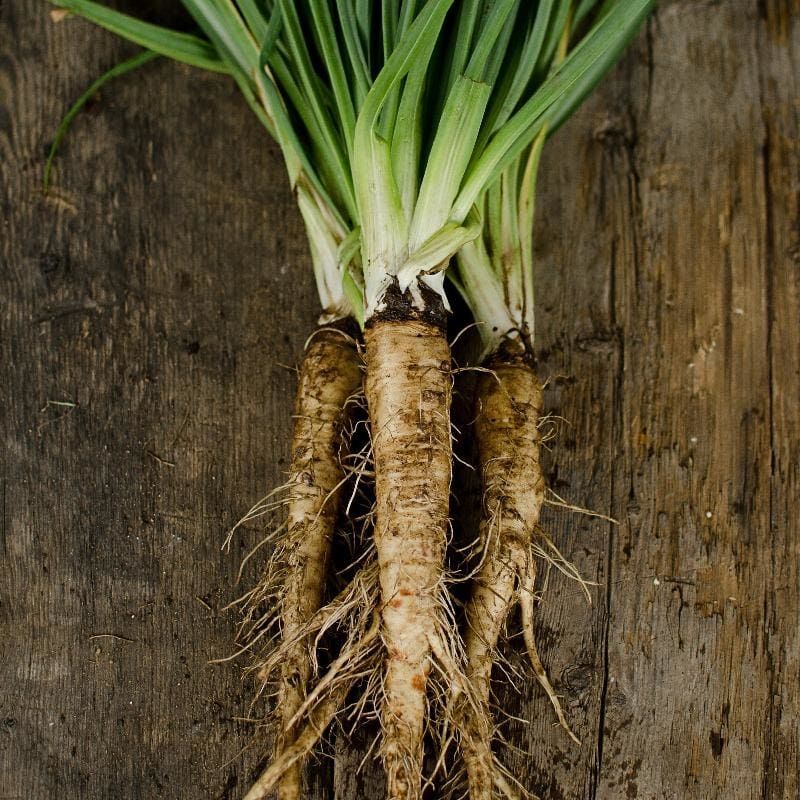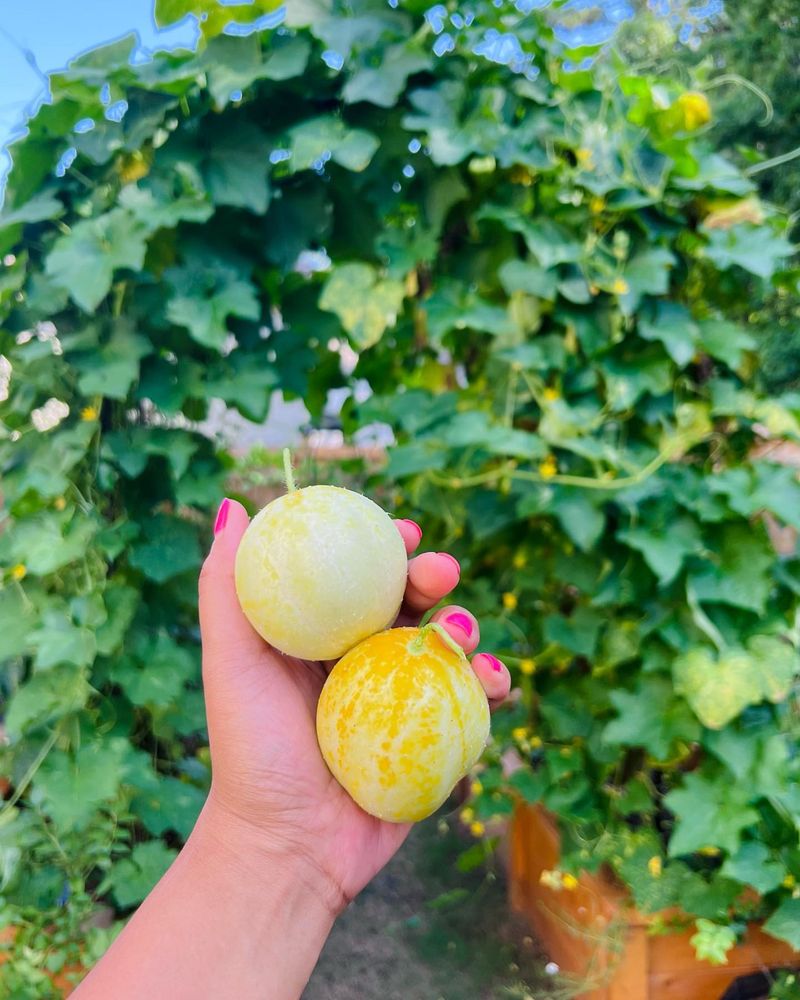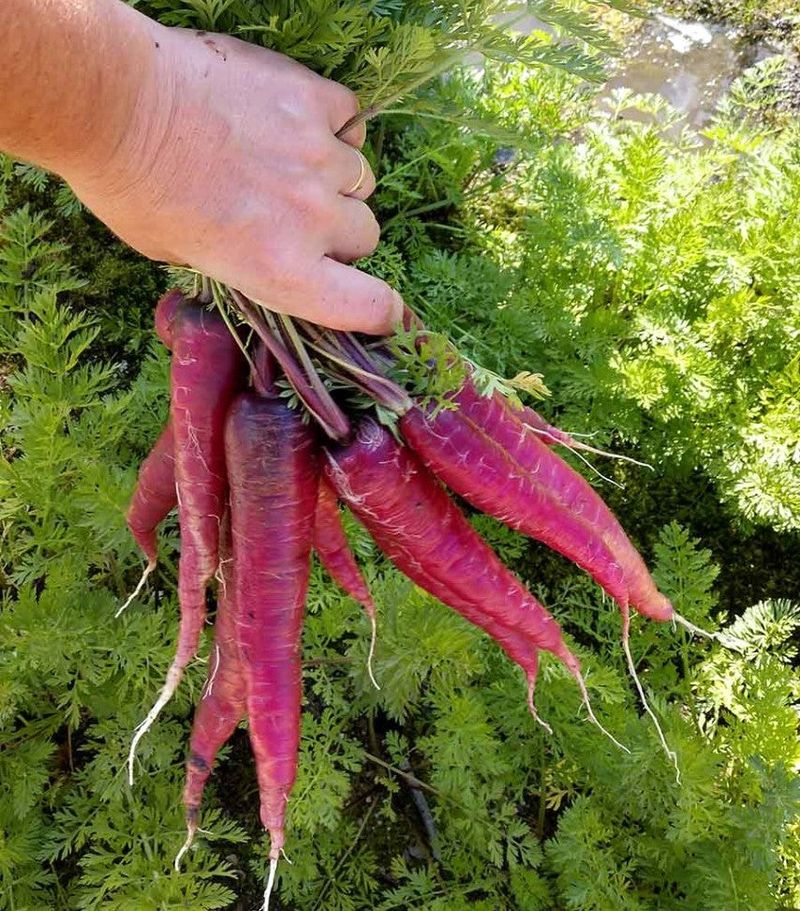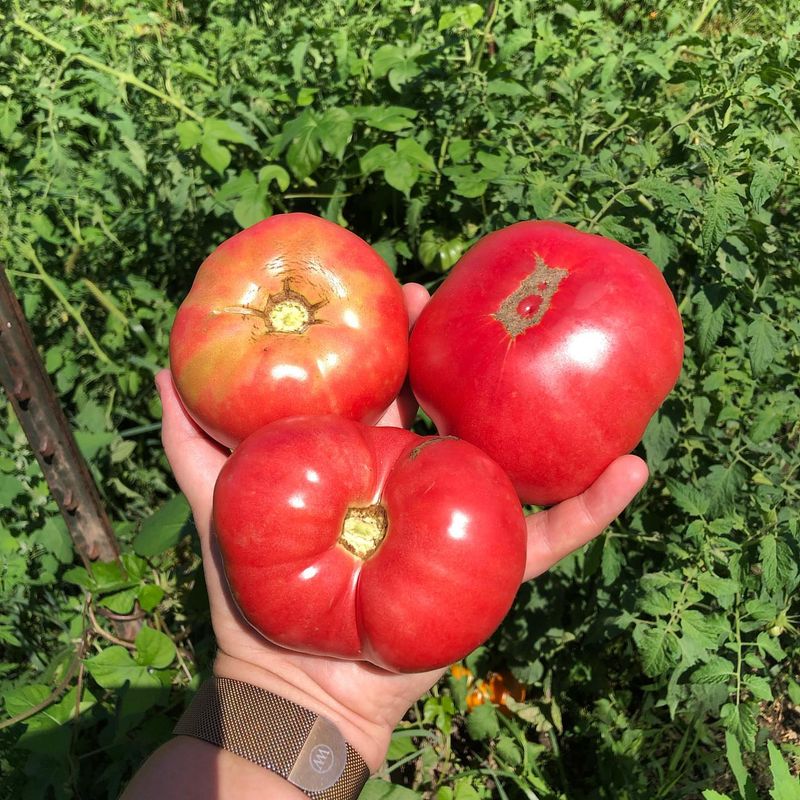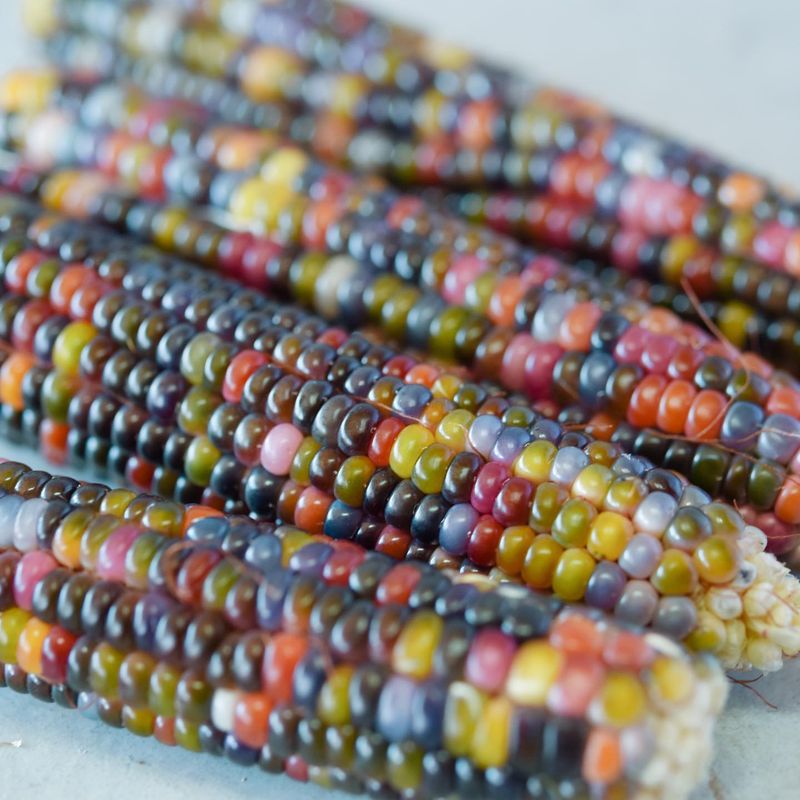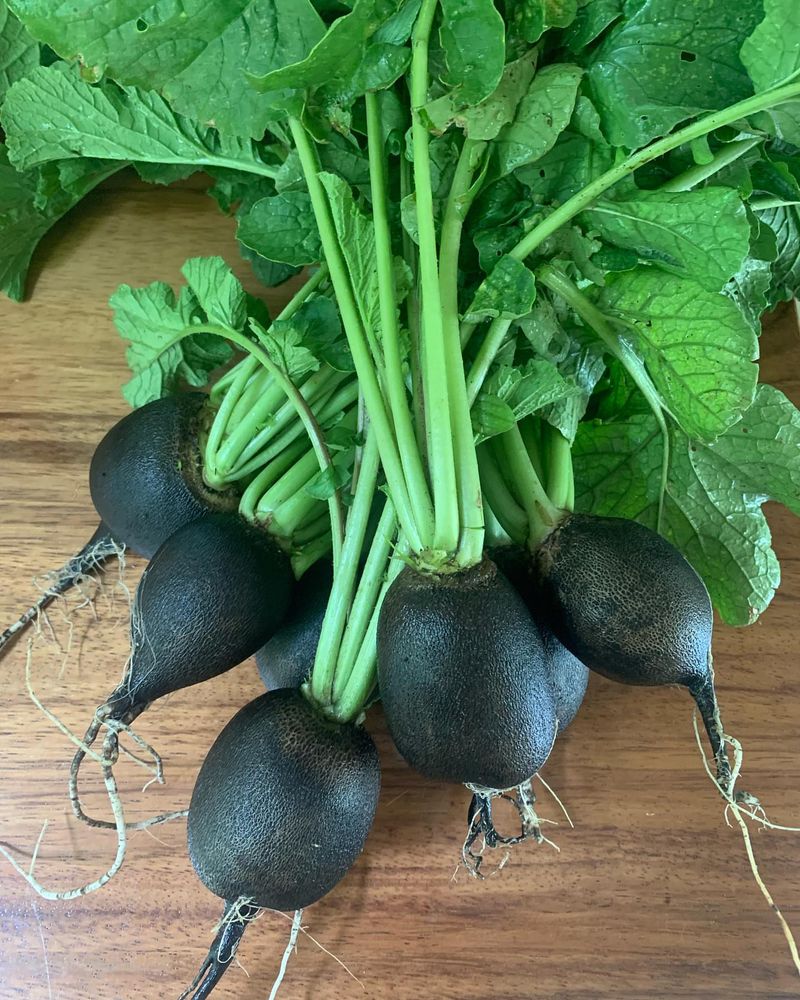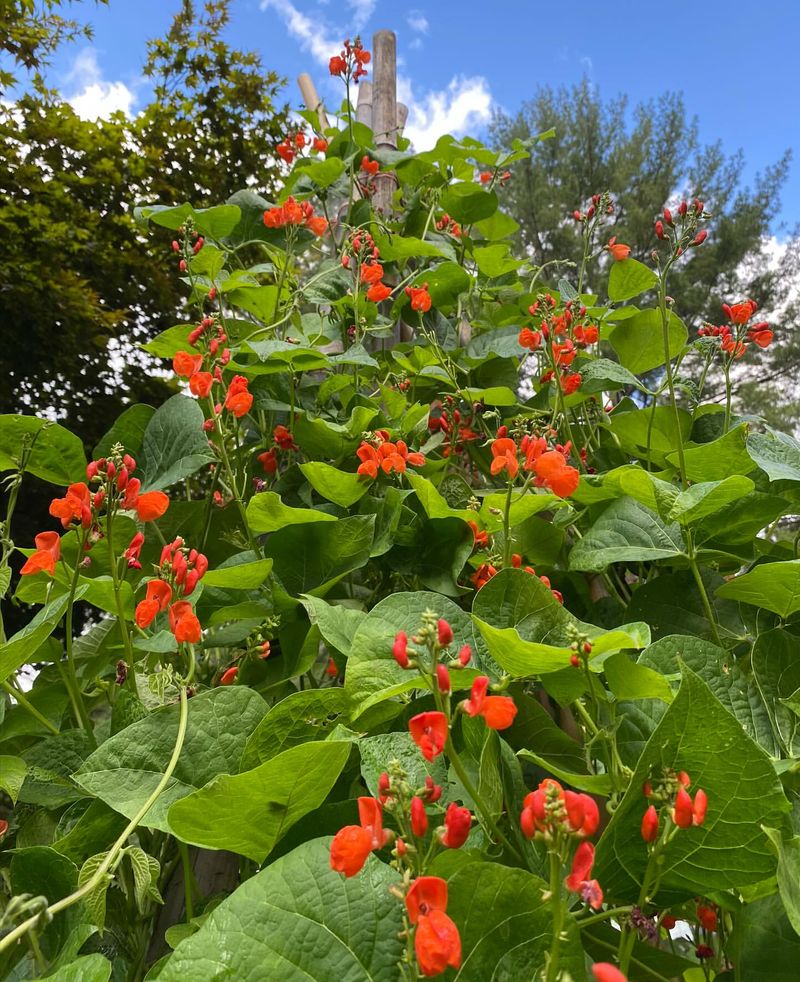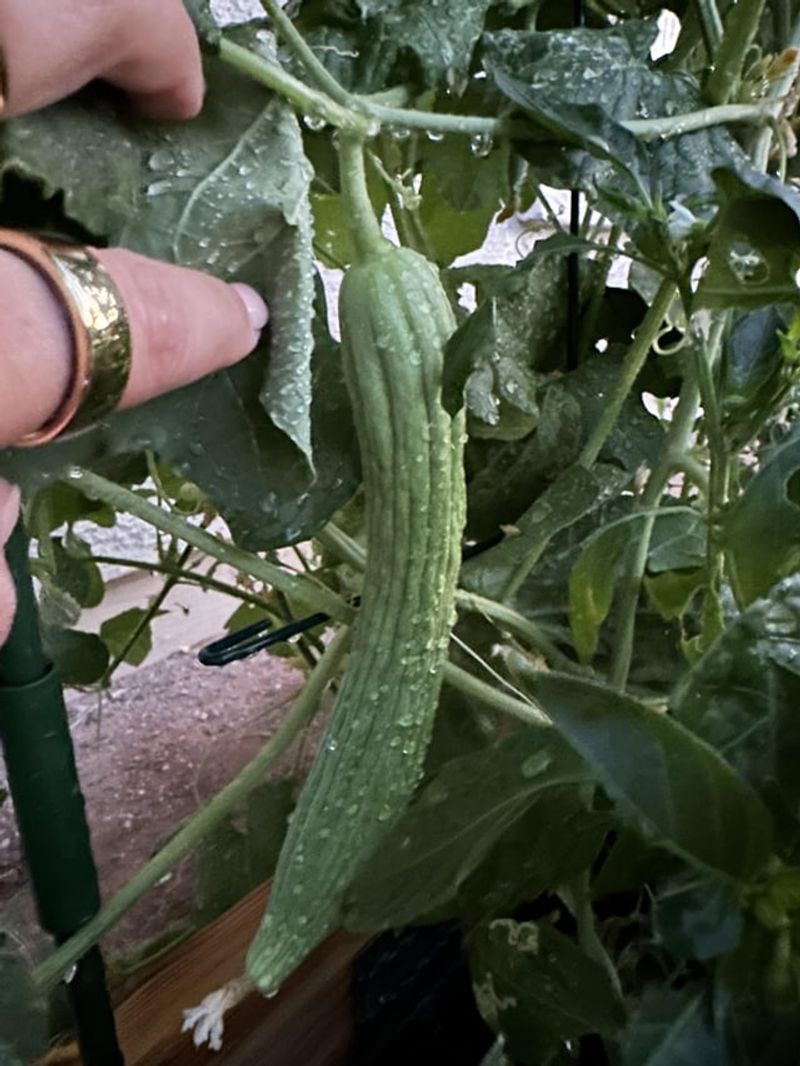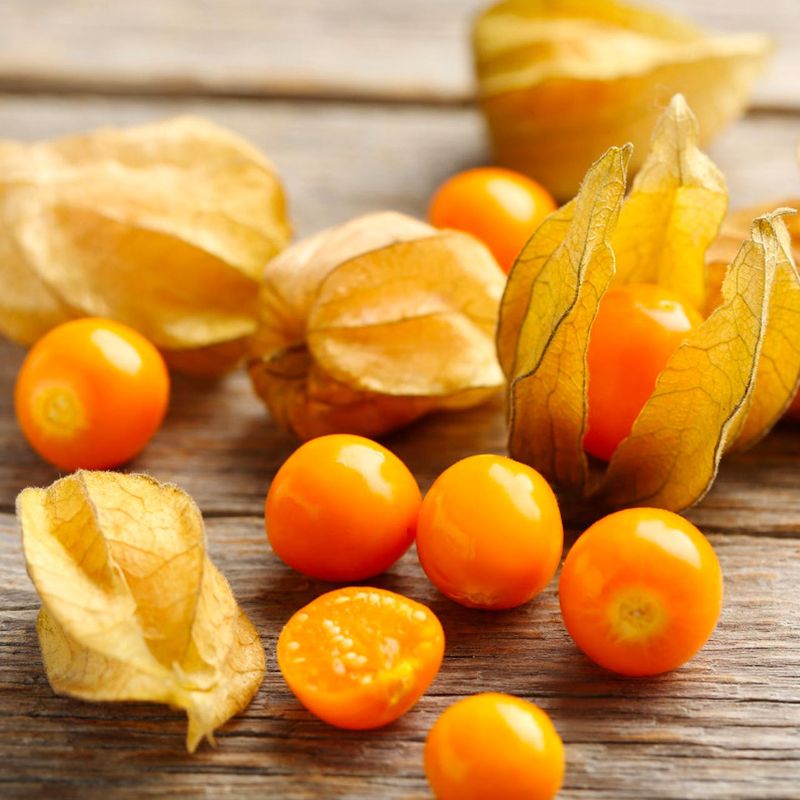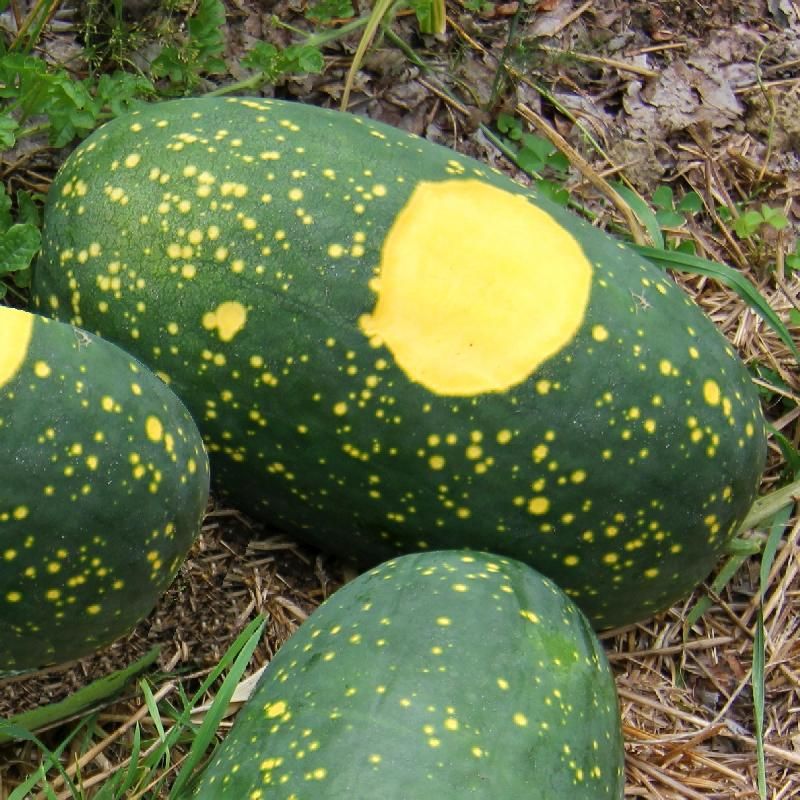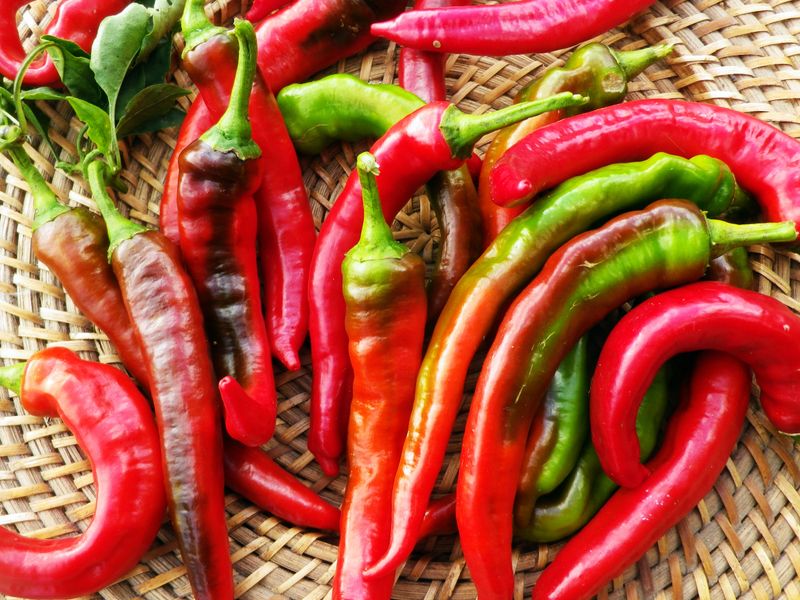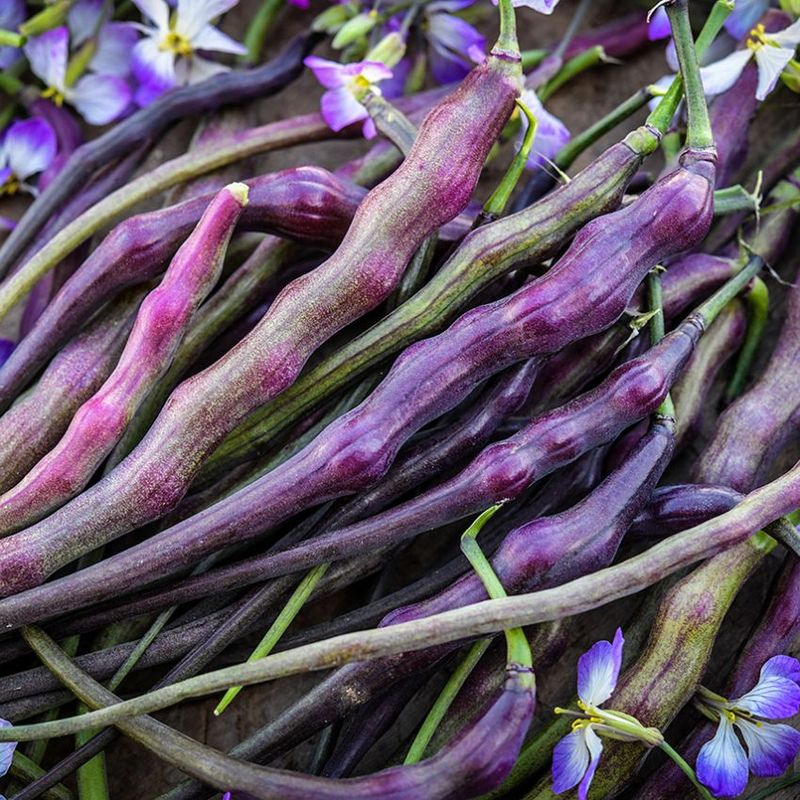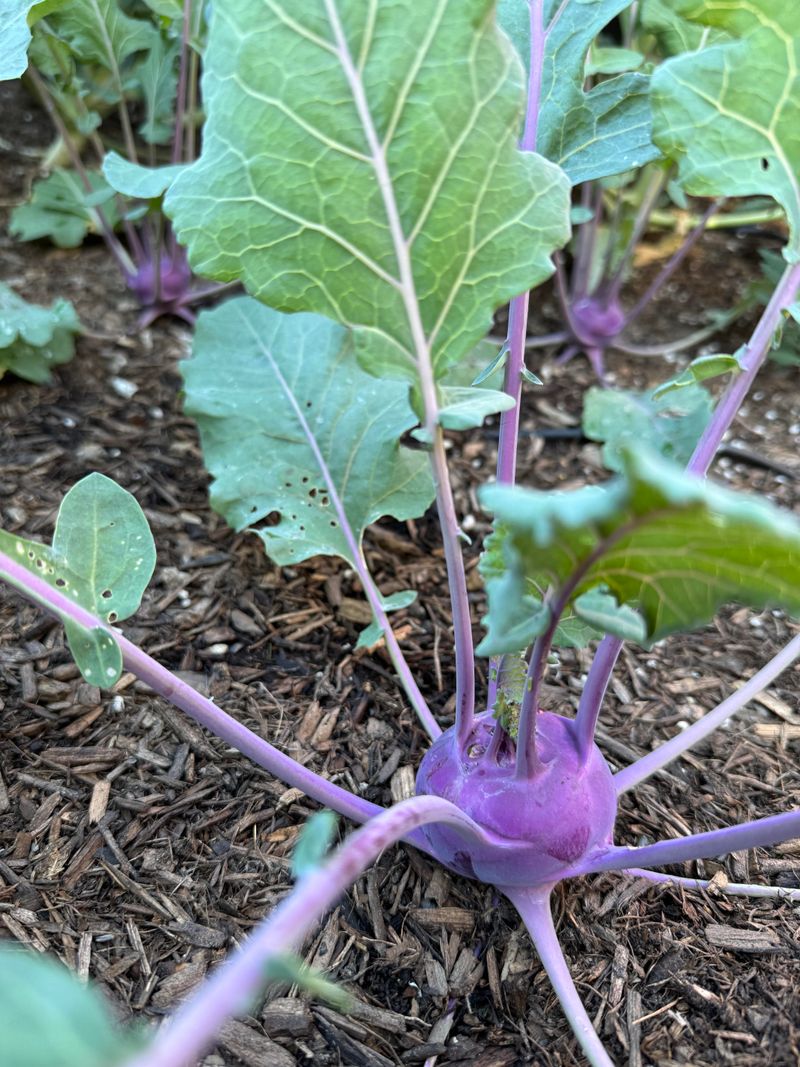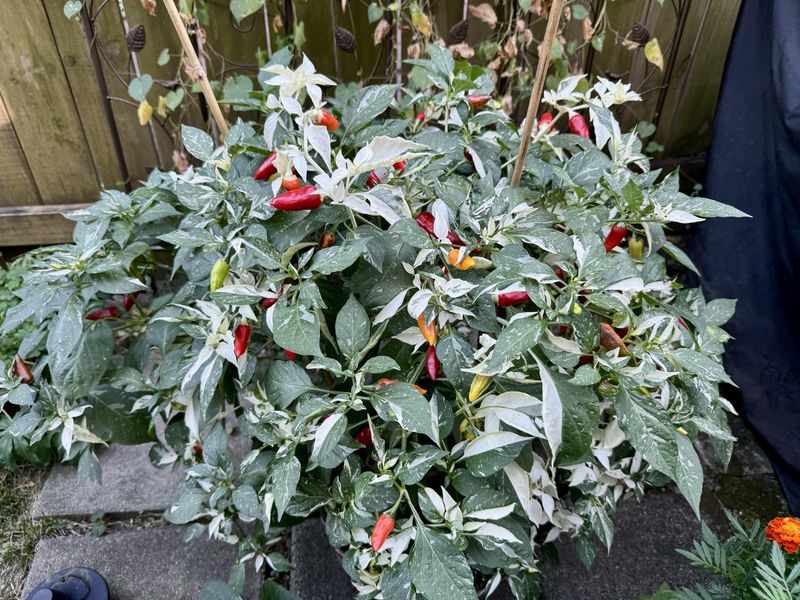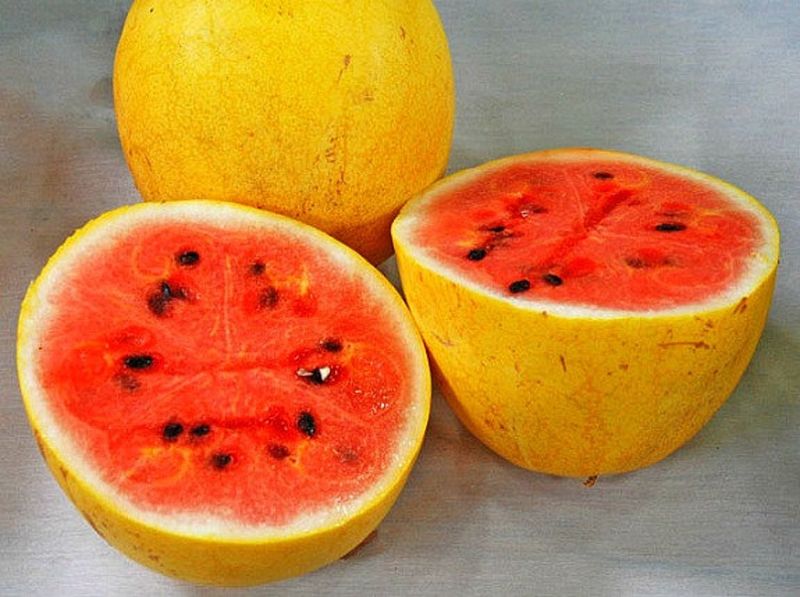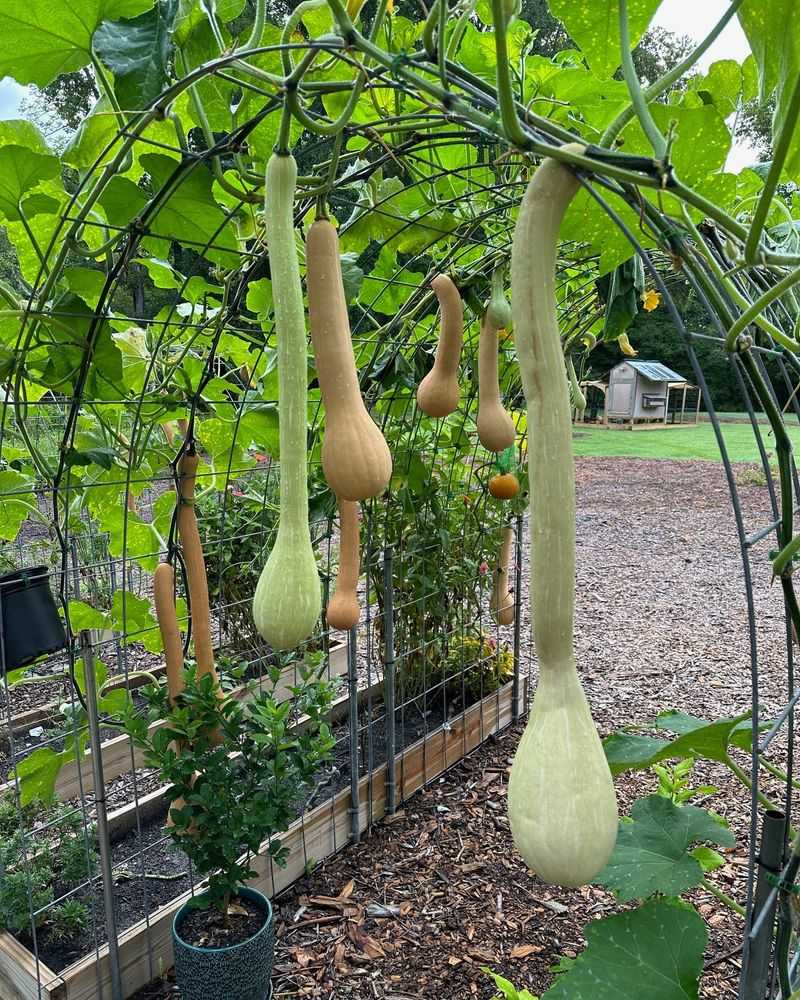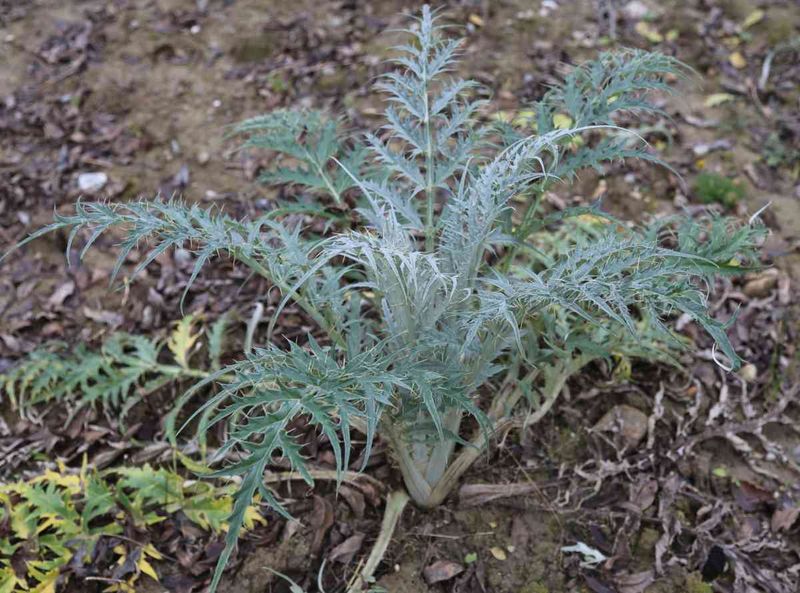Old-fashioned garden gems are making a comeback in backyard plots across the country. These overlooked veggies, once regulars in our grandparents’ gardens, lost popularity when supermarkets started favoring uniform produce for easy shipping.
But now, home growers are bringing them back with pride. What sets these heirlooms apart isn’t just their quirky shapes or vibrant colors—it’s the taste. From sweet, nutty parsnips to richly flavored beans, their culinary charm is hard to beat. Each variety carries a story, rooting us in tradition and heritage.
Growing heirlooms is about more than food—it’s about preserving history. Planting these treasures invites a deeper connection with the past and a delicious promise for the future. The garden becomes not just a space for harvest, but for storytelling too.
1. Salsify: The Oyster Plant
Once a Victorian-era favorite, this root vegetable disappeared when faster-growing crops took center stage. The long, slender roots take patience to grow but reward you with a flavor that’s surprisingly similar to oysters when cooked.
My grandfather used to grow rows of salsify behind his shed. Last season, I planted some on a whim, and the white star-shaped flowers alone made it worth the garden space.
Harvest after the first frost for the sweetest flavor. The roots store well in cool, damp sand throughout winter, providing a steady supply when other fresh vegetables are scarce.
2. Lemon Cucumber
Round, yellow, and about the size of a tennis ball, these weren’t commercially viable because their thin skins bruise easily during shipping. The mild, sweet flavor lacks the bitterness often found in green cucumbers.
Growing them along my fence last summer, I noticed how well they handled the heat wave that killed my regular cucumbers. Their compact vines make them perfect for container gardens.
Harvest when they’re pale yellow, not deep gold. The seeds remain tender even when mature, so there’s no need to scoop them out before eating—just slice and enjoy their refreshing crunch.
3. Purple Dragon Carrots
These striking purple-skinned carrots with orange cores were common before the 17th century, when orange varieties became popular for political reasons. Their intense color comes from anthocyanins, the same compounds found in blueberries.
The neighbor kids always gather when I pull these from the ground—their faces light up at the ‘magic’ purple carrots. Beyond the novelty, they’re notably sweeter than orange carrots after a light frost.
Try growing them in deeper containers if your soil is rocky. Unlike modern carrots bred for uniform shape, these heirlooms will fork around obstacles, creating some interesting harvest-time surprises.
4. Mortgage Lifter Tomatoes
During the Great Depression, a radiator repairman bred these massive tomatoes and sold the plants for $1 each—eventually making enough to pay off his mortgage. The pink-red fruits can weigh up to two pounds each.
After years of growing perfectly round hybrid tomatoes, I tried these last summer. The irregular shapes might not win beauty contests, but the rich, sweet-tart flavor made me question why I’d ever grown anything else.
Give these heavy producers plenty of support—their branches will break under the weight of the fruit. One plant easily produces enough tomatoes for a family, with plenty left over for neighbors.
5. Glass Gem Corn
This stunning multicolored corn looks like strings of jewels when dried. Nearly lost to history, it was saved by a Cherokee farmer who passed seeds to friends before his death.
My first time growing it, I thought the seed packet photos must be exaggerated—until I peeled back the husks at harvest. Each ear revealed a unique pattern of blues, purples, reds, and golds that looked almost too beautiful to eat.
While too starchy for fresh eating, it makes exceptional cornmeal with a nutty flavor. Save a few ears as decorations—they’ll start conversations and remind you to save seeds for next year’s planting.
6. Black Spanish Radish
Dating back to 16th century Europe, these coal-black radishes fell from favor due to their strong flavor and rough appearance. The crisp white interior provides stark contrast to the charcoal exterior.
During winter months when fresh greens are scarce, these storage radishes have become my go-to for adding zip to salads. They’re surprisingly versatile—grated into slaws or roasted until sweet.
Plant in late summer for fall harvest. Unlike spring radishes that bolt in heat, these actually need some hot weather to develop properly, then cooler temperatures to size up without getting woody.
7. Scarlet Runner Beans
Native Americans grew these beans centuries before Europeans arrived. The bright red flowers attracted hummingbirds while producing nutritious beans that could be eaten young as snap beans or mature as shelling beans.
For years I grew them purely as ornamentals along my fence. Then a gardening friend convinced me to let some pods mature—the large purple and black speckled beans made the richest soup I’d ever tasted.
Save a few dried beans each year in a paper envelope. Many gardeners report their seeds becoming better adapted to local conditions over time, producing more vigorously with each passing season.
8. Armenian Cucumber
Technically a melon rather than a cucumber, this ribbed, snake-like vegetable can grow up to three feet long. It disappeared from markets because its curved shape didn’t stack well on grocery shelves.
The first time I grew one, it curled into a complete circle. My daughter called it her ‘cucumber hoop’ and insisted on showing everyone who visited our garden that summer.
Unlike regular cucumbers that become bitter with age, these remain sweet and crisp even when they reach impressive sizes. Harvest at any length—the thin skin never needs peeling and the seeds stay tender throughout.
9. Ground Cherries
Related to tomatillos, these small fruits grow inside paper-like husks that drop to the ground when ripe. Commercial growers abandoned them because the husking process couldn’t be mechanized easily.
After planting them once three years ago, I haven’t needed to replant—they self-seed reliably but aren’t invasive. The pineapple-vanilla flavor is unlike anything else in the garden.
Wait until the husks turn completely papery and fall off the plant before harvesting. Gathered in their husks, they’ll keep for weeks on the counter, gradually developing a deeper, more complex flavor as they cure.
10. Moon And Stars Watermelon
Almost extinct by the 1980s, this watermelon variety features dark green skin speckled with yellow dots (the stars) and larger yellow blotches (the moons). Its irregular pattern made it commercially unpopular despite its exceptional sweetness.
When I cut into my first homegrown one last August, the deep red flesh had my whole family gathering around. Even my watermelon-indifferent spouse asked for seconds.
Give these plenty of room—vines spread up to 20 feet. The melons are ready when the spot touching the ground turns yellow and the skin develops a dull, not shiny, appearance.
11. Jimmy Nardello Peppers
Brought to Connecticut by Italian immigrant Giuseppe Nardiello in 1887, these sweet frying peppers were a family treasure. The long, thin red peppers twist and curl as they grow, giving them a distinctive appearance.
For years I avoided growing peppers, assuming they needed perfect conditions. These changed my mind completely—they produced abundantly even during a cool summer when other pepper varieties failed me.
Try them quickly fried in olive oil until the skin blisters and starts to blacken. Their flavor concentrates into something so sweet and complex that many gardeners dedicate significant garden space just to this one pepper variety.
12. Rat’s Tail Radish
Instead of growing for the root, this radish variety is cultivated for its seed pods. The name comes from the long, thin purple pods that grow after the flowers fade. Commercial growers abandoned them when root radishes became standard.
My attempt to grow regular radishes last spring failed when I planted too late and they all bolted. The garden book I consulted mentioned these podding radishes, which actually prefer heat.
Harvest pods when they’re pencil-thin and still tender. They pack all the spicy kick of a radish but stay crisp when added to stir-fries. Plus, they’ll produce for months rather than the one-time harvest of root radishes.
13. Turkish Orange Eggplant
Small, ribbed, and bright orange when ripe, these eggplants look nothing like the purple giants in supermarkets. They were common in American gardens until the early 1900s when larger varieties became popular.
After growing them between tomato plants as companion plants, I discovered they’re much less fussy than standard eggplants. Their compact size means they’re ready weeks earlier than larger varieties.
Use them while still firm—the flavor is milder and less bitter than purple eggplants. The orange color remains vibrant even after cooking, adding unexpected brightness to ratatouille and other dishes where eggplant typically disappears.
14. Kohlrabi
Looking like something from another planet, this member of the cabbage family develops a swollen, round stem above ground. Common in European gardens, it nearly vanished from American ones as convenience foods gained popularity.
The first time I pulled one from my garden, my son asked if I’d grown alien spaceship vegetables. We sliced it thin and ate it raw—the crisp, juicy texture and mild, sweet flavor won him over immediately.
Harvest when the bulbs reach tennis ball size for the sweetest flavor. Left too long, they become woody. Both purple and green varieties taste similar, with the purple ones adding striking color to vegetable platters.
15. Fish Pepper
With beautiful variegated leaves and striped fruits that ripen from cream to red, this pepper was essential in seafood seasoning along the Chesapeake Bay. African American communities preserved it for generations before it nearly disappeared in the 1940s.
Finding these seeds at a swap last year felt like discovering buried treasure. The plants themselves are ornamental enough for flower beds, while producing plenty of medium-hot peppers.
Dry whole peppers by stringing them with needle and thread to make decorative ristras. They’ll keep their heat and flavor for cooking throughout winter, while serving as a colorful kitchen decoration.
16. Golden Midget Watermelon
Developed in the 1950s but nearly lost to seed catalogs, this small watermelon has a unique feature—the rind turns bright yellow when ripe, eliminating the guesswork of harvest timing. The fruit weighs just 3-4 pounds, perfect for small households.
During last summer’s drought, my regular watermelons struggled while these thrived with minimal watering. Their early maturity (70 days) means northern gardeners can actually harvest watermelons before frost.
Plant them along the edge of the garden where their compact vines won’t overwhelm neighbors. Despite their small size, the sweet red flesh has full watermelon flavor, with thin rinds that maximize the edible portion.
17. Tromboncino Squash
Shaped like a curved trombone (hence the name), this Italian heirloom can be harvested young as summer squash or allowed to mature into winter squash. Its resistance to squash borers made it popular before modern pesticides.
When garden space got tight, I trained mine up an arch trellis. The fruits hung down like musical instruments, drawing comments from everyone who visited. They never developed the bitterness that affects zucchini in late summer.
Harvest when they’re 8-12 inches long for tender, zucchini-like use. Or let them grow to 3 feet, where they develop a butternut-like flavor and hard shell that allows them to keep for months without refrigeration.
18. Cardoon
A close relative of the artichoke, grown for its thick stalks rather than flower buds. This Mediterranean staple was common in American gardens before celery became the preferred stalk vegetable.
The silvery-blue foliage in my garden last year stopped visitors in their tracks—many mistook it for an ornamental before I explained its culinary uses. Even non-gardening friends asked for seeds.
Blanch the stalks by wrapping them in paper for the last few weeks of growth. This reduces bitterness and results in a more tender texture when cooked. The artichoke-like flavor makes them worth the extra effort.


